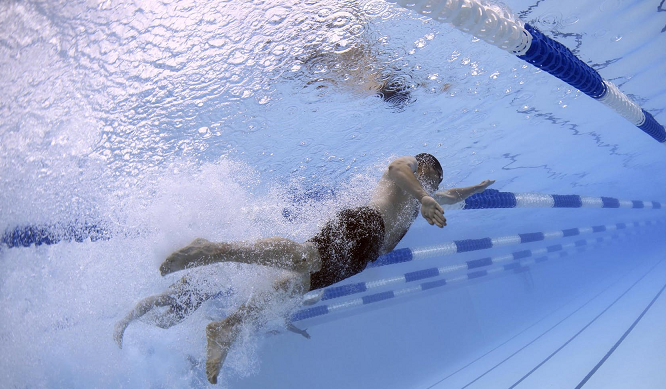Enhance your athletic performance with increased lung strength. Perform general and specific exercises to built robust lungs. Train harder for a longer distance with a healthier respiratory system.
Train hard using multi-purpose and specialized exercises to increase lung strength. Lung Strengthening Exercises Part 1 contains information about how aerobic exercise, anaerobic exercise and several types of exercises strengthen the lungs. In Part 2, I describe specific breathing exercises that build lung power.
Normal Breathing: Practice normal breathing until it is second nature. Focus on the movement of your diaphragm. Start in the supine position, advance to seated and standing positions. Exhalation should be twice as long as inhalation.
Deep Breathing: Practice deep breathing. Place your arms an inch wider than normal and retract your scapulas. Relax your face, mouth, jaw and neck. Expand your ribcage while inhaling through your mouth for two to three seconds. Exhale completely for four to six seconds. Start in a supine position, then seated, then standing. Do not rock your body back and forth.
Deep inhale followed by a slow exhale: Inhale deeply through your mouth and hold for one second. Exhale through an almost closed mouth for ten seconds while pressing your tongue against your lower teeth.
Strong Exhale: Inhale fast and deep through either the mouth or nose. Exhale with force as if attempting to blow an object across a swimming pool.
Prolonged Exhale: Tape a piece of masking tape to your finger. Inhale slow and deep. Hold your finger six inches in front of your eyes. Exhale for eight seconds attempting to keep the tape moving.
Blowing Up Balloons: The ribcage and lungs receive a tremendous workout from blowing up balloons. Lung strength and endurance is developed by blowing up several balloons in sequence.
Pool Exercises: Execute exercises in a pool to build powerful lungs. Water exercises are strenuous. For safety reasons always perform water exercises with a partner who is trained in emergency procedures.
Standing Submerged: Practice normal breathing and deep breathing while standing in neck deep water. Blood shifts to the chest cavity while the water compresses the chest. Breathing is more difficult and the lungs must work harder.
Underwater Breath Holding: Increased pressure underwater places greater demand on the lungs, diaphragm and ribcage. Going under even a foot increases the lungs workload. Take a deep breath and go under. Hold as long as you can then come up. Immediately take another deep breath and go under. Perform three to five repetitions.
Underwater Swimming: Challenge your lungs with underwater swimming. Fill the lungs with a deep inhalation and go underwater. Swim as long as possible. When you need to stop come up, take a deep breath and start again. Perform three to four repetitions.
Less advanced swimmers should take longer rest periods between underwater swims. Alternating between underwater swimming and surface swimming is a good alternative for newer swimmers.
Conclusion: Strong lungs are a huge asset for competitive and recreational athletes. Increase your lung strength by developing a training routine that strengthens your respiratory system. Utilize breathing exercises in and out of the pool to develop powerful lungs. Improve your lung strength to thrust yourself to new athletic personal records and a higher level of fitness.
Dr Donald A Ozello DC of Championship Chiropractic in Las Vegas, NV
Web Site: http://www.championshipchiropractic.com/
Blog: https://www.championshipchiropractic.com/wordpress/
YouTube: https://www.youtube.com/user/drdozellodc/videos
Twitter: https://twitter.com/drdozellodc
Facebook: https://www.facebook.com/Championship-Chiropractic-280141628688300/
LinkedIn: https://www.linkedin.com/in/dr-donald-a-ozello-dc-716b3233
“Running: Maximize Performance & Minimize Injuries” https://www.amazon.com/Running-Performance-Chiropractors-Minimizing-Potential/dp/1493618741
**Disclaimer: Always consult a medical professional before beginning an exercise program. Always work within your capabilities. Never perform an exercise that elicits or increases pain or symptoms. Reading this article and viewing the linked videos does not take the place of seeing a medical professional. Please visit a medical professional for evaluation, diagnosis & treatment.

